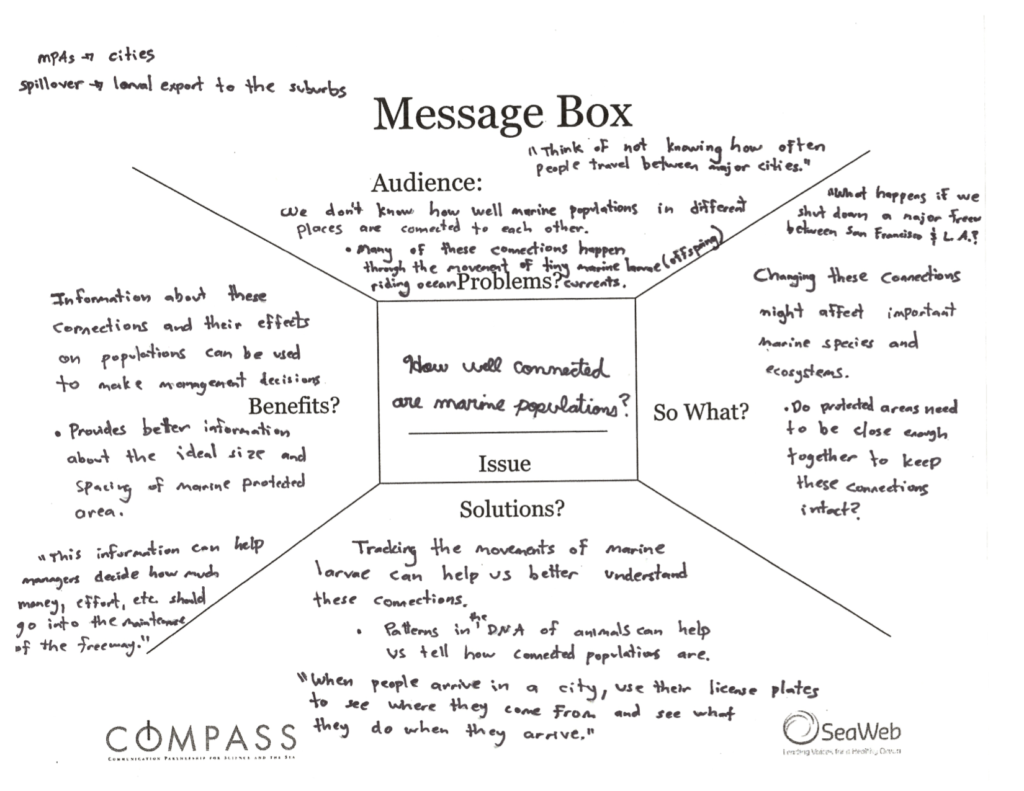Researchers are stretched for time and science communication efforts are often not seen as a priority. But savvy science communicators quickly learn to make the most of the time they do have to communicate and here are some of their tricks for having impact while they maintain a busy research career.
1. Plan, plan, plan: Science involves a heck of a lot of communication anyway, be it between research collaborators, pitching for funding or in simplifying ideas down to present in journal papers. Add another small step to those processes, mapping out your key messages and creating a one-page lay summary of your research. This can be used for informing press releases, blog posts or be elaborated on in interviews and public talks – this is your go-to summary for communicating your science and can help others get their heads around it too. See our Desk Guide for Scientists: Working with Media for preparing key messages and check out the Message Box tool below (and this explainer blog post) for getting to the heart of the problem your research seeks to solve.

2. Give your comms team a heads-up: There are communications experts in your institution keen to help you get your science out to the public. They can plan your messaging, advise you on explaining risk and uncertainty, finesse your comments, write your releases and commission videos to go with them. But they are as busy as you and need lots of upfront notice. Help them by flagging upcoming publication of research early (when the paper is accepted) and feed them potential ideas that aren’t time-sensitive so they have a pipeline of projects to work on when they aren’t flat out fielding media queries.
3. Gather as you go: Whether you are out in the field or working on a computer simulation, capture anything that could be useful down the track in bringing your science to life. Shoot videos on your phone, take photos, animations, graphics, audio clips, anything that could be used to illustrate the story later. Get some footage of you and your collaborators at work, particularly if there’s a slim chance this part of the process can be recreated for the cameras later. Put all of this material in one place so it can be found and drawn on quickly when your research is ready for prime time. The first thing producers and journalists will ask you is: “what have you got to illustrate the story?”.
4. Share the load: If you are working as part of a team, find out the various comfort levels with science communication and divide up the labour. The seasoned pro can front the media interviews, the PhD student can write the blog post. Researchers uncomfortable in the public spotlight can act as back-up, fact-checking, curating the material, offering advice and support. A team approach to science communication reduces the strain on any one individual and makes for slicker presentation.
5. Reuse, repurpose: A press release can be rewritten as a blog post, which can be truncated into a series of tweets. Extract as much value from the scicomms work you do by tweaking it for different purposes. Those key messages can form the basis of a short Youtube video or classroom talk. That animation can go on your Facebook page, but with a quick re-edit, may be suitable for news websites too. Very few people will see your science communicated across all of the various in-house, mainstream media, new media and public event fora, so repeating yourself isn’t a big problem.